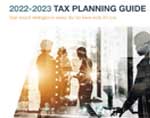Every business needs a budget, but not every budget looks the same. Some companies have intricately detailed ones, others rely on simple templates generated with off-the shelf software, and still others forego formal budgets in favor of a “fly by the seat of your pants” approach. (That last option isn’t recommended.)
Because budgeting is such an essential part of running a business, it’s easy to take for granted. You may fall into a routine that, over time, doesn’t keep up with your company’s evolving needs. To identify areas of improvement, here are six key elements of a business budget and some best practices to consider:
1. Current overview. You may think you’ve created a sound budget, but its usefulness will be limited if it’s based on what your business looked like and how it operated five years ago. Compose an up-to-date description of your business. This should include its strategic goals, sales targets, the state of your industry and market, and impactful economic factors.
2. Budget rationale. Explain in clear language how the budget supports your company’s mission, vision, values, goals and objectives. To be included in the budget, every line item (see below) must support all five of those factors. If one doesn’t, question its merit.
3. Detailed line items. Naturally, the “meat” of every budget is its line items. These typically include:
- Revenue, such as sales income and interest income,
- Expenses, such as salaries and wages, rent, and utilities,
- Capital expenditures, such as equipment purchases and property improvements, and
- Contingency funds, such as a cash reserve.
An important question to ask is: Are we including everything the business spends money on? Although maintaining a detailed budget can be tedious, it’s imperative to managing cash flow.
4. Selected performance metrics. Among the primary purposes of a budget is to compare projected spending to actual spending — making adjustments as necessary. As part of the budgeting process, establish precisely which metrics you’ll use to determine whether you’re making, breaking or beating the budget.
5. Supporting appendices. Discuss with your leadership team whether your budget would be more useful with additional information. Commonly attached supporting appendices include historical budget and results analyses, department spending summaries, tables and graphs depicting market and cost trends, organizational charts, and glossaries of terminology.
6. Executive summary. This brief written snapshot, which usually appears at the very top of the budget report, is intended to provide a concise overview of the chief objectives and major sections of the budget. If you’re not already using one, consider it. For you and other internal users, an executive summary can serve as a quick reference and help you set your expectations. Perhaps more important, it can make your budget easier to understand for outside parties such as lenders and investors.
Your current budget may not include all six of these elements — and that’s OK. As mentioned, companies are free to create budgets in whatever format suits their size and needs. But you should approach budgeting with an eye on continuous improvement. And to that end, please contact us. We can assess your budgeting process from start to finish and suggest ways to perform this critical business function more efficiently and effectively.
© 2024




